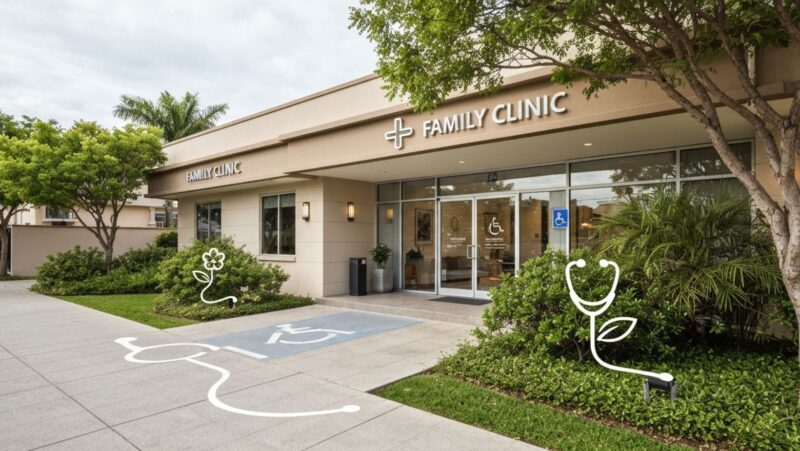
Key Takeaways:
- Hyperbaric Oxygen Therapy (HBOT) provides increased oxygen delivery to enhance healing and cognitive function.
- Scientific evidence supports the use of HBOT for treating TBI and its potential application in neurodegenerative diseases.
- HBOT is safe when administered with proper precautions, though some risks should be noted and mitigated through established protocols.
- Beyond its clinical applications, HBOT is surrounded by myths that need debunking to ensure informed decision-making by patients and providers.
Introduction to Hyperbaric Oxygen Therapy (HBOT)
As we delve into the depths of medical advancements, one particular therapy stands out with its unique approach to enhancing health: hyperbaric oxygen therapy (HBOT). This treatment entails breathing 100% oxygen within a pressurized chamber, significantly increasing the amount of oxygen your blood can carry. HBOT was initially popularized for treating decompression sickness among divers. Still, its application has grown to encompass a variety of conditions, specifically in the realm of cognitive health and rehabilitative medicine.
The rationale behind HBOT is elegantly simple yet grounded in complex physiological mechanisms. By increasing the amount of oxygen your body can use, HBOT facilitates the reparative processes at the cellular level, potentially aiding in the recovery of various injuries and enhancing overall brain function.
How Hyperbaric Oxygen Therapy Works
The magic behind HBOT’s efficacy is the combination of pure oxygen and increased atmospheric pressure. When a patient enters the hyperbaric chamber, the pressure inside is raised, sometimes up to three times the normal air pressure. The lungs can then take in much more oxygen than possible at normal air pressure. Importantly, under these conditions, oxygen is not only carried by the red blood cells but is also dissolved into all of the body’s fluids, including the plasma, the lymph, and the cerebrospinal fluids surrounding the brain and spinal cord. It ensures that areas of the body that might receive less blood flow still get the oxygen needed to start the healing process.
The principle of using increased pressure to deliver higher oxygen levels is rooted in understanding gas laws in physics. While the concept might sound straightforward, the physiological impact on the body is profound. By saturating tissues with oxygen, cells function more efficiently, reduce inflammation, and activate the body’s inherent healing mechanisms, particularly in areas with compromised circulation or oxygenation.
Cognitive Enhancement Through HBOT
Intriguingly, the potential of HBOT to aid in cognitive enhancement is a subject of increasing exploration. Studies indicate that the elevated oxygen levels provided by HBOT may foster neuroplasticity, the brain’s ability to form new neural connections, which is crucial for learning and memory. Individuals with cognitive deficits or those recovering from brain injuries could experience improved functions such as memory, attention, and processing speed. HBOT is not a panacea, but for specific individuals, it offers a ray of hope where traditional therapies might have reached their limits. As scientists continue to explore these cognitive benefits, HBOT could emerge as an essential tool in the fight against a range of neurological conditions. While anecdotal evidence and initial studies are promising, more comprehensive research is needed to fully understand the extent of HBOT’s impact on cognitive enhancement.
The Role of HBOT in Treating Traumatic Brain Injuries (TBI)
Among the most compelling applications of HBOT is in the treatment of traumatic brain injuries. Treatment for traumatic brain injuries (TBIs) is still being researched, with symptoms ranging from minor concussions to severe brain damage. HBOT has shown potential as a therapeutic option to help mitigate the long-term effects of brain injuries. The premise is that increased oxygen delivery can jump-start neurodegenerative processes. Patients with persistent symptoms following a TBI, such as headaches, cognitive disturbances, and sleep disruption, have reported notable improvements following a series of HBOT sessions. However, treatment protocols must be established appropriately to maximize efficacy while minimizing risks, suggesting a tailored approach to each individual’s needs based on the severity and specifics of their condition.
HBOT for Aging and Neurodegenerative Conditions
As we continue to explore the human body’s capacity to heal and regenerate, HBOT has been brought to the forefront as a potential agent in the fight against neurodegenerative diseases, particularly in the aging population. HBOT may offer benefits for individuals with Alzheimer’s disease by improving cognitive functioning and decreasing symptoms associated with dementia.

The science behind this postulates that HBOT can induce neuroplasticity and promote the growth of new blood vessels in the brain, thereby improving blood flow and oxygenation to degenerating areas. While the evidence is nascent and still being evaluated, the prospect of using HBOT as a complementary therapy to existing treatments is an area ripe for exploration, potentially offering a new avenue for enhancing the quality of life for patients with neurodegenerative disorders.
The Safety Profile of Hyperbaric Oxygen Therapy
Understanding the safety profile is paramount when considering any medical treatment. HBOT is considered a low-risk therapy with a relatively high safety margin when applied correctly. Common side effects can include discomfort in the ears and sinuses due to pressure changes, akin to what one might experience during an airplane’s ascent or descent. More significant risks, though less common, include oxygen toxicity and barotrauma; however, these risks can be effectively managed through careful monitoring and adjustment of treatment protocols.
Responsible HBOT clinics will closely evaluate patients for any contraindications to therapy, such as certain lung conditions or ear problems, and continuously monitor individuals during treatment sessions. The adherence to best practices and established safety measures ensures that patients receive the therapeutic benefits of HBOT with minimal risk.
Real-Life Examples of HB OT’s Impact on Cognitive Health
The personal experiences of those who have undergone HBOT can be as compelling as clinical data, providing a glimpse into the therapy’s potential impact on real life. From veterans recovering from battle-inflicted brain injuries to elderly individuals regaining aspects of cognitive function, the stories of improvement and renewed hope are powerful. While these examples do not replace the importance of rigorous scientific studies, they highlight the transformative potential of HBOT for people who have endured cognitive impairments.
Healthcare professionals also attest to HBOT’s potential benefits, with many reporting positive outcomes in their patient populations. The convergence of clinician expertise, substantiated research, and patient testimonials emerges a well-rounded narrative of HBOT’s place in cognitive health.
Accessibility and Cost Considerations for HBOT
The optimistic outlook on HBOT is tempered by practical considerations regarding its accessibility and affordability. HBOT facilities may only be readily available in some regions, and the cost of treatment can be prohibitive for many without insurance coverage. While some health insurance plans may cover HBOT for specific FDA-approved indications, coverage for off-label or emerging uses could be more consistent. Nevertheless, advocacy for broader access to HBOT is gaining momentum, driven by the therapy’s therapeutic potential and individuals’ success stories. Innovative financing models and pursuing more rigorous research to establish evidence-based efficacy for various conditions could make HBOT more accessible. Providers and patients advocate for policies that reflect HBOT’s medical value, not just its current economic and regulatory standing.
Debunking Myths About Hyperbaric Oxygen Therapy
Misinformation and myths about HBOT can create barriers to its acceptance and use. One common misconception is that HBOT is solely for treating decompression sickness or that it is an experimental treatment with little scientific backing. HBOT has been FDA-approved for several medical conditions and continues to be the subject of considerable scientific research. Another misconception is that the therapy is incredibly time-consuming and inconvenient; however, treatment sessions usually last about 90 minutes and are typically conducted in a series, allowing patients to integrate them into their schedules.

By clarifying these myths with factual information, healthcare providers can help patients make educated decisions about incorporating HBOT into their treatment. Through patient education and myth-busting, HBOT can take its rightful place as a potentially valuable tool in clinical practice.
The Future of Hyperbaric Oxygen Therapy in Medicine
HBOT’s horizon seems bright. Advances in technology and a deepening understanding of the body’s response to hyperoxygenation pave the way for broader applications. With ongoing research into HBOT’s effects on various medical conditions and its refinement as a therapeutic technique, we may well witness a burgeoning era for this oxygen-based therapy. The potential impact of HBOT on public health should be considered. As evidence mounts for its efficacy across a spectrum of conditions, it is plausible to anticipate wider recognition and utilization of HBOT in medical practice. The journey from alternative treatment to an accepted medical procedure is long and winding. Still, with each successful patient outcome and validated study, HBOT continues to advance along this path, promising enhanced health and improved quality of life for many.












